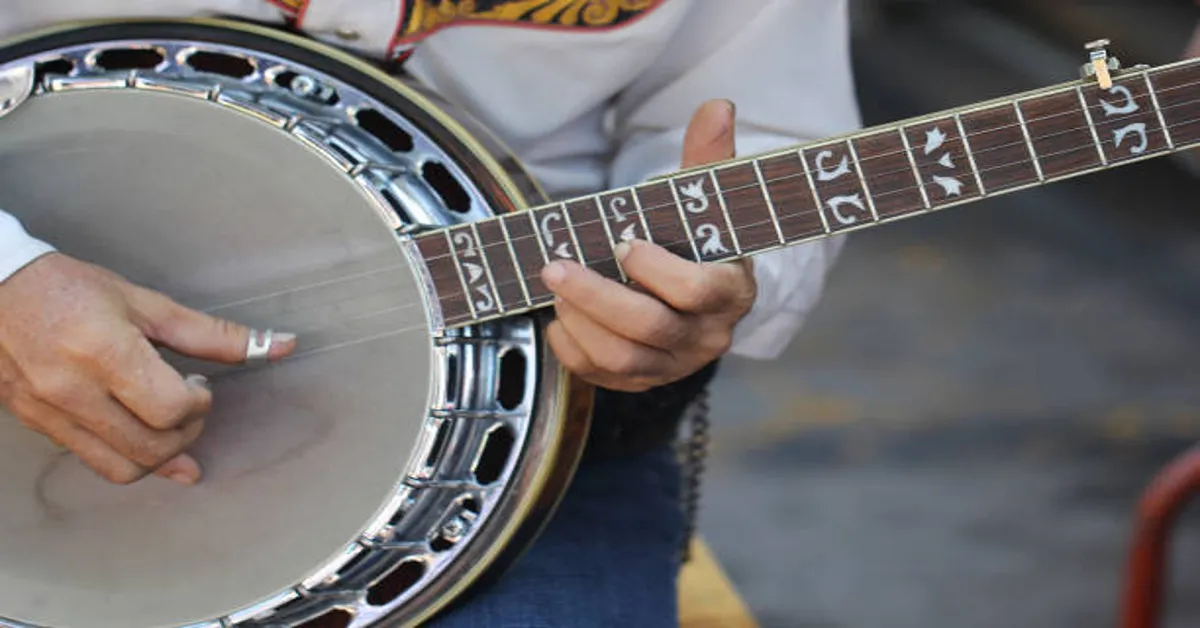The banjo is one of the most distinctive and soulful instruments in the world of music. With its twangy resonance and bright tonal character, it has been at the heart of American folk, bluegrass, country, and even jazz traditions for generations. But what truly makes the banjo versatile and musical is its ability to form chords, giving the player freedom to accompany vocals, craft rhythm patterns, and add harmonic depth to a performance. While banjo picking styles often highlight single notes, rolls, and melodic runs, learning and mastering banjo chords is an essential foundation for becoming a confident and creative banjo player.
This article explores the world of banjo chords in depth—covering everything from their structure and shapes to tips for smoother transitions, finger positioning, chord progressions, and stylistic applications across genres. Whether you are just starting with the instrument or seeking to polish your chord vocabulary, the knowledge below will provide a thorough roadmap to mastering chords on the banjo.
Understanding the Basics of Banjo Chords
What Is a Chord?
A chord is the combination of at least three notes played together, typically a root, a third, and a fifth. These three tones provide the foundation for harmony, allowing music to have emotional colors ranging from cheerful and bright to sad and somber. For example, a C major chord contains the notes C (root), E (major third), and G (perfect fifth). On the banjo, these notes can be played on different strings in various positions on the fretboard.
Standard Banjo Tuning and Its Impact on Chords
Most five-string banjos are tuned to open G tuning (gDGBD). This tuning means that when the instrument is strummed without fretting any strings, it naturally produces a G major chord. This tuning makes learning chords much more intuitive, since many fundamental chord shapes build directly from this open chord. Other tunings, such as double C (gCGCD) or D tuning (aDF#AD), are also popular and influence chord fingerings, but open G is the most common and serves as the standard starting point.
How Banjo Chords Differ from Guitar Chords
Many guitarists who switch to banjo quickly notice that while some shapes look similar, the banjo’s higher-pitched fifth string and reentrant tuning make chord voicings unique. Unlike the guitar, the banjo often favors partial chords (using only two or three notes of a full chord) to allow for smoother playing and integration with picking rolls. This makes the banjo both simpler and trickier: simpler in that fewer fingers are often needed, but trickier in that understanding the sound of open strings and chord inversions is essential.
Major Banjo Chords
The first family of chords any banjo player learns is the set of major chords. These are the happiest-sounding chords and form the basis of countless songs. Below is a table outlining common major chord shapes in open G tuning.
| Chord | Common Shape (Frets) | Notes Played |
|---|---|---|
| G | 00000 (open strings) | G-B-D-G-B |
| C | 2012 | C-E-G-C |
| D | 4234 | D-F#-A-D |
| A | 2222 (barre) | A-C#-E-A |
| E | 2102 | E-G#-B-E |
| F | 3213 | F-A-C-F |
These shapes provide the essential building blocks for songs in the keys of G, C, and D, which are the most common keys used in bluegrass and folk banjo music.
Minor Banjo Chords
Minor chords introduce a more emotional and darker quality. Instead of a major third, they use a minor third, shifting the mood instantly. Here are some common minor chord shapes:
| Chord | Common Shape (Frets) | Notes Played |
|---|---|---|
| Gm | 0333 | G-Bb-D-G |
| Am | 2002 | A-C-E-A |
| Dm | 0230 | D-F-A-D |
| Em | 0432 | E-G-B-E |
| Bm | 4224 | B-D-F#-B |
Learning both major and minor chords helps players move smoothly between happy and melancholic passages, essential for expressive music-making.
Seventh Chords on the Banjo
Seventh chords add tension, richness, and color to progressions. They are especially useful in jazz, blues, and bluegrass endings.
| Chord | Common Shape (Frets) | Notes Played |
|---|---|---|
| G7 | 0001 | G-B-D-F |
| C7 | 2010 | C-E-G-Bb |
| D7 | 4230 | D-F#-A-C |
| A7 | 2020 | A-C#-E-G |
| E7 | 1202 | E-G#-B-D |
Seventh chords are often used to lead back to the tonic (home chord), creating satisfying resolutions in songs.
Learning Chord Progressions
A chord progression is a series of chords played in sequence to form the harmonic backbone of a song. In banjo music, the I-IV-V progression (1st, 4th, and 5th chords of a scale) is the most common. For example, in the key of G, the I-IV-V chords are G, C, and D.
Example: I-IV-V in G Major
| Chord Number | Chord Name | Shape (Frets) |
|---|---|---|
| I | G | 00000 |
| IV | C | 2012 |
| V | D | 4234 |
This simple sequence forms the foundation of countless songs such as “This Land Is Your Land” and many bluegrass standards.
Barre Chords and Movable Shapes
A key technique in mastering banjo chords is learning barre chords. By pressing all strings at a single fret, you can shift chord shapes up and down the neck to create new chords without memorizing entirely new fingerings.
For instance:
- A barre at the 2nd fret creates an A major chord.
- A barre at the 5th fret produces a C major chord.
Movable shapes, like the F-shape and D-shape chords, also allow players to form chords across the neck, expanding versatility.
Finger Positioning and Smooth Transitions
Many beginners struggle with finger placement and chord transitions. To overcome this, focus on the following:
- Economy of Motion: Keep fingers close to the fretboard and minimize unnecessary lifting.
- Practice Chord Switching: Move between G-C-D in rhythm until transitions feel natural.
- Use Partial Chords: Often, two or three notes are enough in banjo playing, especially when rolling.
Banjo Chords in Different Styles
Bluegrass
In bluegrass, chords form the backbone of rhythm accompaniment. Players often use vamping (muted strumming) or rolling through chord shapes while the melody is played on top.
Folk
Folk banjo tends to use full strummed chords, creating a warm, acoustic backdrop for singing. Simpler progressions dominate here.
Jazz
Jazz banjoists explore complex chord voicings, including diminished, augmented, and extended chords. The banjo’s bright timbre provides a unique twist to jazz harmonies.
Old-Time
Old-time music often employs drone strings with simple chord shapes, focusing more on rhythm and groove than harmonic complexity.
Practical Tips for Mastering Banjo Chords
- Daily Practice: Spend at least 15 minutes switching between chords.
- Play Along With Songs: Choose easy folk tunes and strum along.
- Use a Metronome: Keep chord changes in steady rhythm.
- Experiment With Alternate Tunings: Explore double C or sawmill tuning to expand your chord vocabulary.
- Record Yourself: Listening back helps identify where transitions need work.
Advanced Chord Types
Beyond major, minor, and seventh chords, advanced players may explore:
- Suspended Chords (sus2, sus4): Replace the third with a second or fourth for an open, unresolved sound.
- Diminished Chords: Create tension and unease, useful in jazz.
- Augmented Chords: Bright and dissonant, excellent for transitions.
- Inversions: Reorder chord tones to highlight different bass notes.
Chord Chart Reference
A summarized chord chart for quick reference:
| Chord | Shape | Chord | Shape |
|---|---|---|---|
| G | 00000 | Gm | 0333 |
| C | 2012 | Cm | 2010 |
| D | 4234 | Dm | 0230 |
| A | 2222 | Am | 2002 |
| E | 2102 | Em | 0432 |
| F | 3213 | Fm | 3113 |
Conclusion
Banjo chords are the doorway to making music that is rich, harmonious, and expressive. While fingerpicking rolls and single-note runs often get the spotlight, chords serve as the backbone of accompaniment, arrangement, and creativity on the banjo. By learning major, minor, seventh, and advanced chord forms, players open themselves up to a universe of musical possibilities. From strumming folk ballads to driving bluegrass rhythms or exploring the complex harmonies of jazz, chords unlock the banjo’s full expressive potential. With patience, practice, and curiosity, every player can build a strong chord vocabulary and transform their playing into something dynamic and inspiring.
ALSO READ: TV96: A Complete Guide to Features, Benefits, and Uses
FAQs
Q1. What are the basic chords every banjo player should learn first?
The most important starting chords are G, C, and D, since these form the basis of the I-IV-V progression common in folk and bluegrass.
Q2. Do I need to learn full four-finger chords on the banjo?
Not always. Many banjo players use partial chords with two or three fingers, which are easier and integrate smoothly with fingerpicking rolls.
Q3. How do barre chords help in banjo playing?
Barre chords allow you to slide one shape up and down the neck, unlocking new chords without memorizing separate positions.
Q4. Can the same chord shapes be used in alternate tunings?
Some shapes transfer across tunings, but many change depending on the tuning. For example, double C tuning alters common chord positions.
Q5. What’s the best way to practice banjo chord transitions?
Practice slowly between pairs of chords (like G to C, C to D) with a metronome, gradually increasing speed as accuracy improves.









